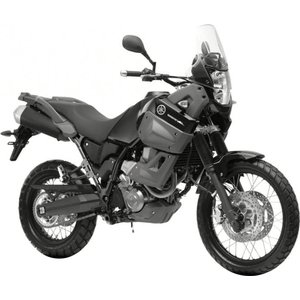Yamaha XTZ 660 Tenere (2008–2016): The Uncompromising Adventurer
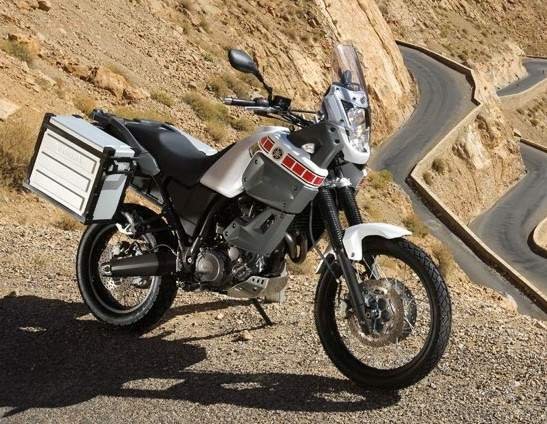
Introduction
The Yamaha XTZ 660 Tenere isn’t just a motorcycle—it’s a legend reborn. From the dunes of the Sahara to the asphalt jungles of modern cities, this single-cylinder adventurer has carved its name into the hearts of riders who crave authenticity. Built between 2008 and 2016, this generation of the Tenere carries forward the legacy of its Dakar-winning ancestors while embracing modern engineering. After spending days with this machine—on highways, gravel trails, and everything in between—it’s clear why it remains a benchmark for riders who want one bike to rule all roads.
Design & Ergonomics: Built for the Long Haul
Rally-Raid Styling Meets Functionality
The Tenere’s design screams “adventure” with its towering windscreen, dual-bulb headlight (reminiscent of a desert scout’s determined gaze), and bodywork protectors. The steel diamond frame isn’t just rugged—it’s a strategic masterpiece, balancing rigidity and flexibility for off-road agility. The 22-liter fuel tank (5.8 US gal) extends beneath the seat, centralizing mass and giving the bike a narrow waist for easier leg reach.
At 865 mm (34.1 in), the seat height might intimidate shorter riders, but the bike’s slim profile and well-padded seat make it manageable. Standing up on the pegs reveals thoughtful ergonomics: the handlebar is wide enough for leverage, and the footpegs (with removable rubber inserts) offer stability whether you’re carving trails or stretching on a highway.

Wind Protection & Practical Touches
The Dakar-style windscreen deflects air efficiently, though taller riders might still feel buffeting at speeds above 110 km/h (68 mph). Practicality shines in details like the oil reservoir integrated into the frame (checked via a dipstick behind the headstock) and the pre-wired cockpit area for GPS units. The LED taillight and minimalist rear fender keep the design clean, while engine guards and a skid plate come standard—no aftermarket upgrades needed for basic protection.
Engine Performance: The Heart of a Nomad
Torque Over Horsepower
The 659 cc liquid-cooled single-cylinder engine delivers 48 hp at 6,000 rpm and 58.4 Nm (43.1 lb-ft) of torque at 5,250 rpm. Numbers don’t tell the full story. This is a motor built for tractable power, not speed records. From idle to 5,500 rpm, the Tenere pulls with a linear urgency, making overtaking trucks on mountain passes or climbing rocky inclines feel effortless. The fuel-injected throttle response is crisp, though purists might miss the raw unpredictability of a carbureted engine.
On pavement, the Tenere cruises comfortably at 110–120 km/h (68–75 mph), but push beyond 130 km/h (81 mph), and vibrations through the seat and bars become pronounced. The 5-speed transmission’s ratios are spaced for versatility, though a 6th gear would’ve been welcome for highway serenity.
Fuel Efficiency & Range
Averaging 21.8 km/l (51.3 mpg), the Tenere can stretch its 22-liter tank to 480 km (298 miles)—enough to outlast most bladders. During a mixed on/off-road test ride in Morocco, the fuel warning light triggered at 270 km (168 miles), but the bike still had reserves for another 50 km (31 miles).
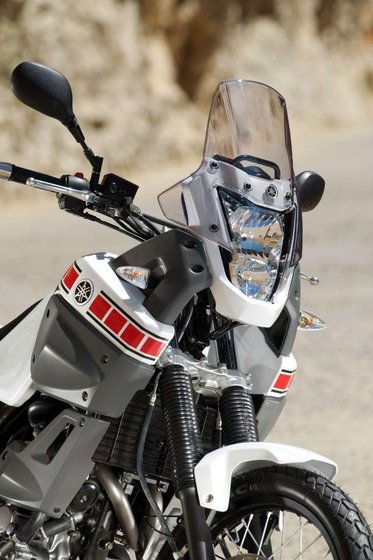
Handling & Suspension: Master of None, Competent at All
On-Road Manners
The Tenere’s 1505 mm (59.3 in) wheelbase and 28-degree rake strike a balance between stability and flickability. On twisty tarmac, it leans willingly, though the 21-inch front wheel and long-travel suspension (210 mm front / 200 mm rear) favor stability over sportiness. The Metzeler Tourance tires (90/90-21 front, 130/80-17 rear) offer predictable grip, even on wet roads.
Off-Road Prowess
This is where the Tenere shines. The suspension soaks up rocks and ruts without bottoming out, and the 245 mm (9.6 in) ground clearance shrugs off obstacles. The aluminum swing arm reduces unsprung weight, helping the rear wheel track uneven terrain. However, the bike’s 206 kg (454 lbs) wet weight becomes apparent in sand or mud—momentum is your friend here.
Braking: Adequate, Not Exceptional
Dual 298 mm front discs with 2-piston calipers provide decent stopping power, though the initial bite is soft—a blessing off-road, where abrupt stops could mean trouble. The rear 245 mm disc lacks feel but is effective for controlling slides. Later models (2013–2016) offered optional ABS, a welcome addition for pavement-focused riders.
Competition: How the Tenere Stacks Up
BMW F800GS
- Pros: More power (85 hp), smoother parallel-twin, advanced electronics.
- Cons: Heavier (207 kg / 456 lbs), pricier, complex maintenance.
Verdict: The BMW suits tech-loving tourers, but the Tenere wins for simplicity and off-road agility.
KTM 690 Enduro R
- Pros: Lighter (146 kg / 322 lbs), explosive 67 hp engine, superior off-road.
- Cons: Harsh seat, tiny fuel tank (12 liters / 3.2 gal), less wind protection.
Verdict: The KTM is a desert racer; the Tenere is a desert crosser.
Suzuki DR650SE
- Pros: Cheaper, air-cooled simplicity, legendary reliability.
- Cons: Antiquated design, no fuel injection, fewer modern comforts.
Verdict: The DR650 is a budget adventurer; the Tenere is a refined upgrade.
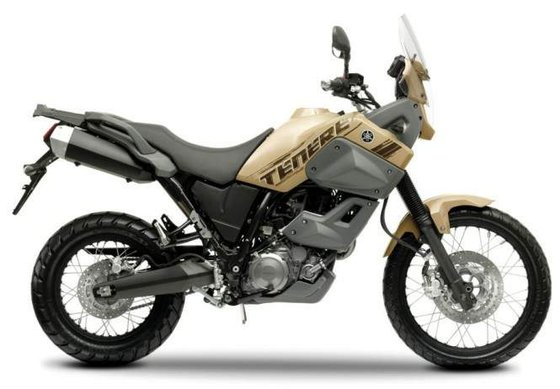
Maintenance: Keeping the Legend Alive
Key Considerations
- Valve Adjustments: Every 10,000 km (6,200 miles). Shim-under-bucket design requires patience but ensures long-term reliability.
- Chain Care: The O-ring chain needs regular cleaning and lubrication—especially after off-road rides. Consider upgrading to a DID X-ring chain for longevity.
- Oil Changes: Every 5,000 km (3,100 miles). Use 10W-40 JASO MA2 oil. The dry-sump system holds 2.9 liters (3.06 US quarts).
- Cooling System: Flush coolant every 2 years. The radiator’s exposed position makes it prone to debris—install a aftermarket guard.
Recommended Upgrades (Available at MOTOPARTS.store)
- Skid Plate: Reinforce protection for rocky terrain.
- Handguards: Deflect wind and brush.
- Akrapovič Slip-On Muffler: Reduces weight and amplifies the single’s growl.
- Luggage System: Pair Yamaha’s side cases with a tank bag for multi-day trips.
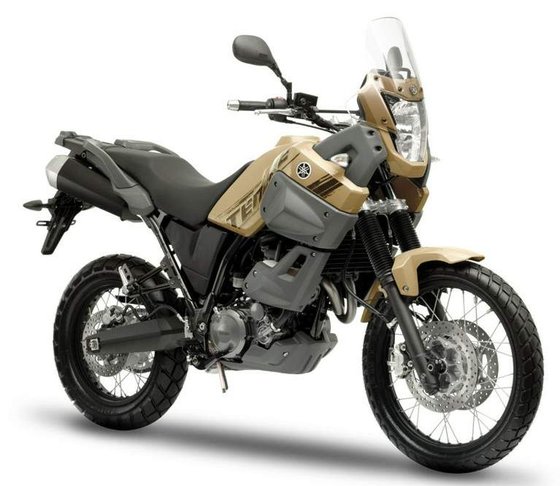
Conclusion: The Everyman’s Adventure Icon
The Yamaha XTZ 660 Tenere isn’t the fastest, lightest, or most technologically advanced bike in its class—and that’s its strength. It’s a machine that asks little and gives much: reliability to cross continents, simplicity to fix in a desert shack, and character to make every ride feel like an expedition. Whether you’re commuting through rain or tracing a GPS route across continents, the Tenere remains a testament to the idea that adventure isn’t about the destination—it’s about the bike that gets you there.
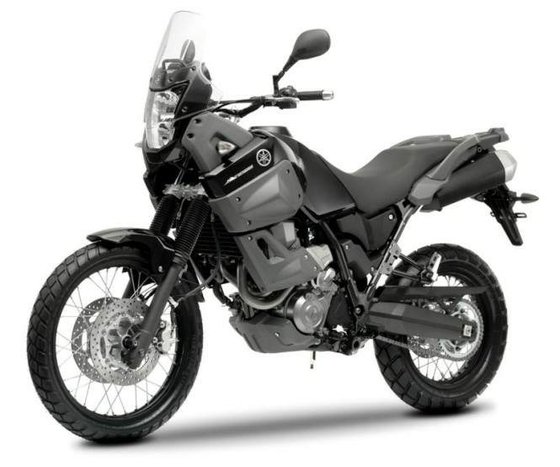











Specifications sheet
| Engine | |
|---|---|
| Stroke: | Four-stroke |
| Ignition: | TCI |
| Max power: | 34 kW | 46.0 hp |
| Max torque: | 58 Nm |
| Fuel system: | Fuel Injection (44 mm throttle body) |
| Lubrication: | Dry sump |
| Max power @: | 6000 rpm |
| Displacement: | 660 ccm |
| Max torque @: | 5250 rpm |
| Configuration: | Single |
| Cooling system: | Liquid-cooled |
| Compression ratio: | 10.0:1 |
| Number of cylinders: | 1 |
| Dimensions | |
|---|---|
| Wheelbase: | 1505 mm (59.3 in) |
| Dry weight: | 183 |
| Wet weight: | 206 |
| Seat height: | 865 mm (34.1 in) |
| Overall width: | 896 mm (35.3 in) |
| Overall height: | 1477 mm (58.1 in) |
| Overall length: | 2246 mm (88.4 in) |
| Ground clearance: | 245 mm (9.6 in) |
| Fuel tank capacity: | 22 L (5.8 US gal) |
| Drivetrain | |
|---|---|
| Final drive: | chain |
| Chain length: | 118 |
| Transmission: | 5-speed |
| Rear sprocket: | 47 |
| Front sprocket: | 15 |
| Maintenance | |
|---|---|
| Engine oil: | 10W40 |
| Idle speed: | 1500 ± 100 rpm |
| Brake fluid: | DOT 4 |
| Spark plugs: | NGK CR7E or NGK CR7EIX |
| Spark plug gap: | 0.6 |
| Coolant capacity: | 1.7 |
| Forks oil capacity: | 1.3 |
| Engine oil capacity: | 2.6 |
| Engine oil change interval: | Every 5000 km or 2 years |
| Valve clearance (intake, cold): | 0.09–0.13 mm |
| Valve clearance check interval: | 24,000 km / 15,000 mi |
| Valve clearance (exhaust, cold): | 0.16–0.20 mm |
| Recommended tire pressure (rear): | 2.5 bar (36 psi) solo, 2.8 bar (41 psi) with passenger |
| Recommended tire pressure (front): | 2.25 bar (33 psi) |
| Additional Features | |
|---|---|
| Top speed: | 158.8 km/h (98.6 mph) |
| ABS availability: | Optional on some models |
| Optional accessories: | Akrapovič slip-on muffler, hand guards, skid plate |
| Standard accessories: | Engine guards, luggage system, wind deflectors |
| Fuel consumption (average): | 21.8 km/L |
| Chassis and Suspension | |
|---|---|
| Frame: | Steel tubular diamond frame |
| Trail: | 113 mm (4.4 in) |
| Rear tire: | 130/80-17 |
| Front tire: | 90/90-21 |
| Rear brakes: | Single 245 mm disc (ABS on some models) |
| Front brakes: | Dual 298 mm discs, 2-piston calipers (ABS on some models) |
| Rear suspension: | Monocross swingarm, 200 mm travel |
| Front suspension: | 43 mm telescopic forks, 210 mm travel |
| Rake (fork angle): | 28° |



